Last updated on
Discover the perfect glass type for your kitchen cabinets as we delve into various options, ensuring both style and functionality are achieved.
Glass kitchen cabinets are a popular trend in modern home decor. They add a touch of elegance and sophistication to any kitchen, while also providing functionality by allowing you to showcase your favorite dishes and accessories.
However, with so many different types of glass available, it can be overwhelming to choose the right one for your kitchen cabinets. In this article, we will explore the various types of glass used for kitchen cabinets and help you determine which one is best suited for your needs.
So whether you’re renovating your entire kitchen or just looking to update your cabinets, keep reading to find out what glass is best for kitchen cabinets!
Key takeaways:
- Clear glass showcases contents and creates an open feel.
- Frosted glass provides privacy while allowing light to pass through.
- Textured glass adds visual interest and works in modern or traditional kitchens.
- Seeded glass has a vintage look and provides privacy with unique air bubbles.
- Leaded stained-glass adds color and personality to any kitchen design.
What's Inside
Types of Glass for Kitchen Cabinets
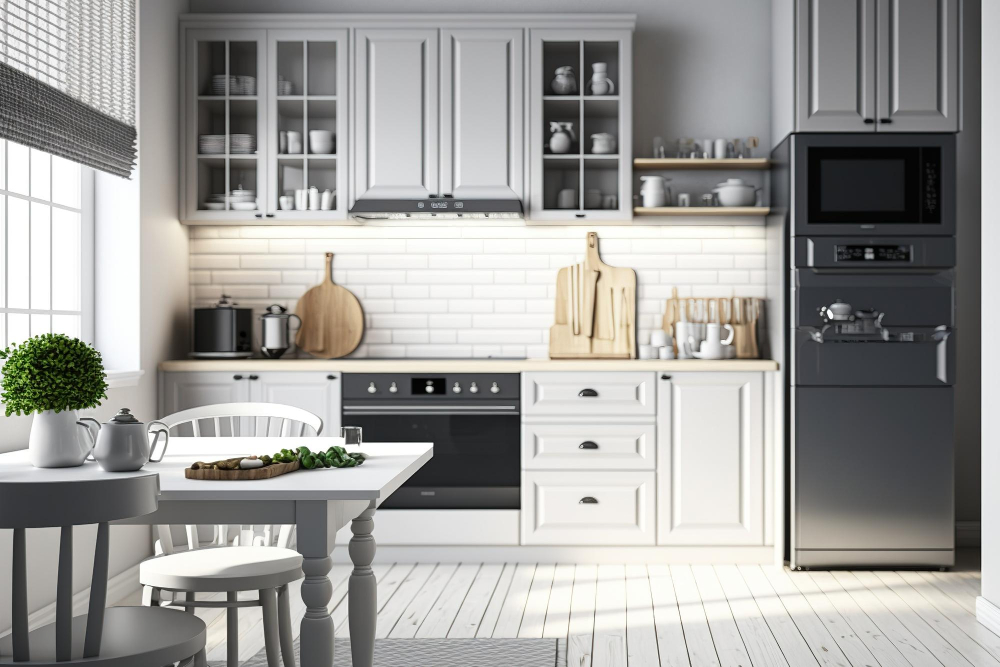
Clear glass is a popular choice as it allows you to showcase your dishes and accessories while also providing an open and airy feel. Frosted glass is another option that provides privacy while still allowing light to pass through.
Textured glass adds visual interest and can be used in both modern and traditional kitchens.
Seeded glass features tiny air bubbles trapped inside the material, giving it a unique look that works well with rustic or vintage-style kitchens. Leaded stained-glass cabinets add color, texture, and personality to any kitchen design scheme.
Sumiglass is another type of cabinet door made from tempered safety glasses with high-quality digital printing technology applied on one side of the panel surface which creates stunning visuals when viewed from different angles.
Clear Glass Cabinet Options
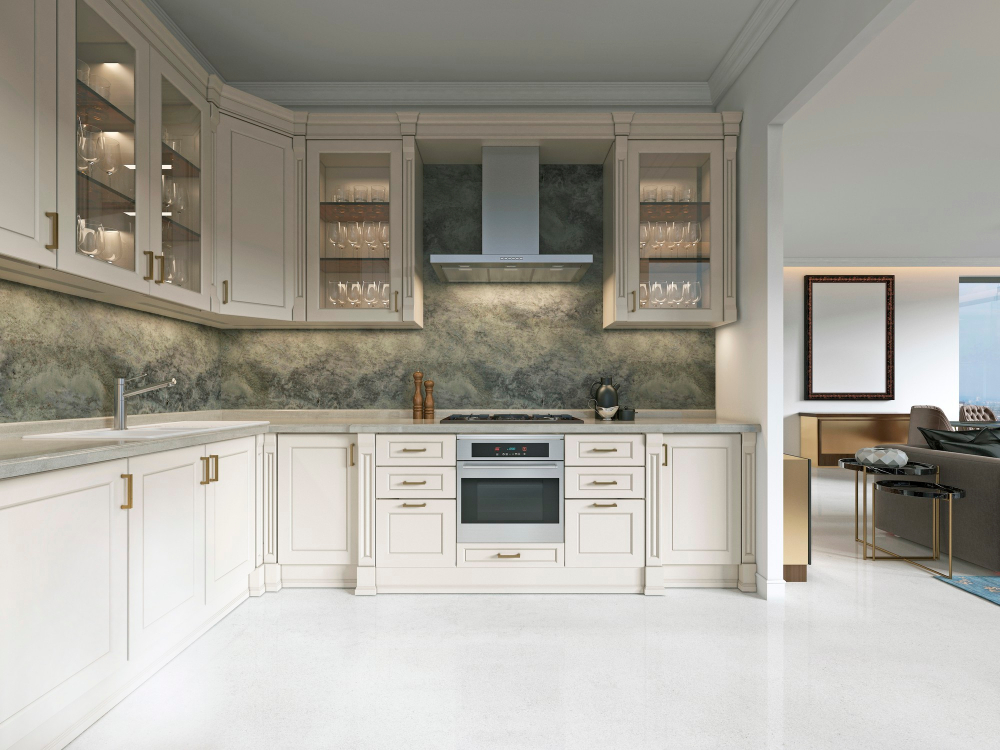
They provide an unobstructed view of the contents inside, making it easy to find what you need quickly. Clear glass cabinets come in various thicknesses, ranging from 1/8 inch to 3/16 inch or more.
Thicker glass is more durable and less likely to break, but it can also be heavier and more expensive.
One option for clear glass cabinet doors is tempered glass. Tempered glass is heat-treated during manufacturing which makes it stronger than regular annealed (non-tempered)glass.
It’s also safer because if broken, tempered safety glasses shatter into small pieces that are less sharp than regular shards of broken annealed glasses.
Another option for clear cabinet doors is low-iron or ultra-clear glasses which have a higher transparency level compared with standard clear float-glass types due to its reduced iron content in the raw materials used during production.
Frosted Glass Cabinets
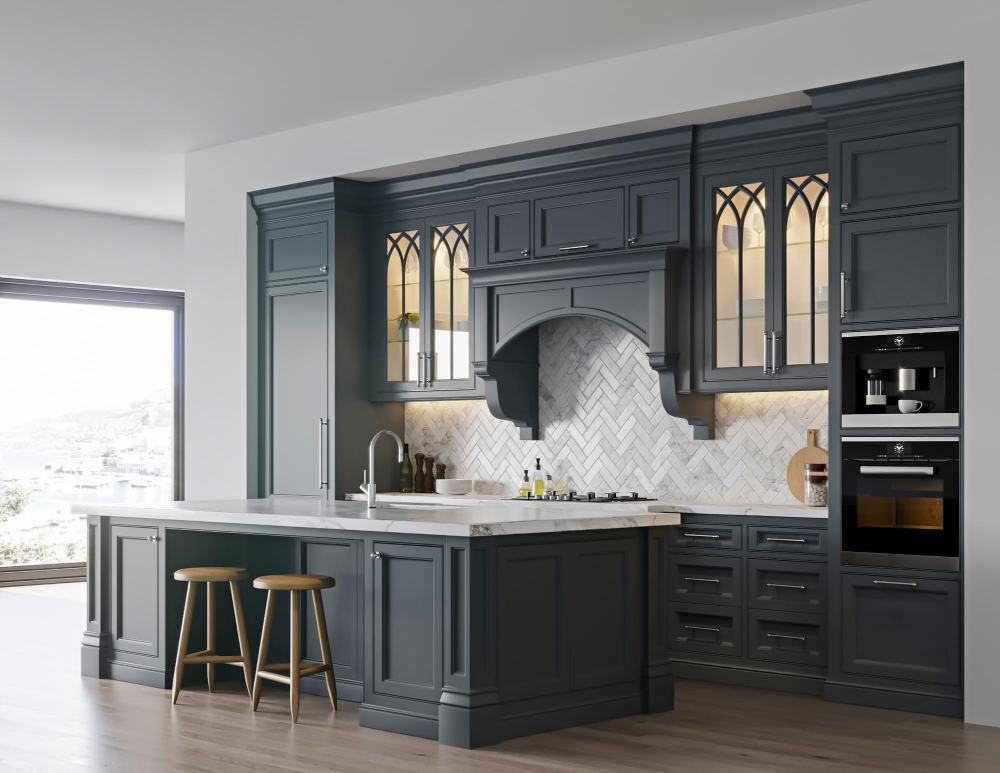
Frosted glass is created by sandblasting or acid etching clear sheet glass, resulting in a translucent surface that obscures visibility while still allowing light to pass through. This type of cabinet door can add an element of sophistication and elegance to any kitchen design.
Frosted glass cabinets are available in various styles and patterns, from simple lines to intricate designs. They work well with both modern and traditional kitchens and can complement any color scheme or decor style.
One advantage of frosted glass cabinets is that they hide the contents inside while still providing some visual interest. This makes them ideal for storing items such as dishes or glasses without having them on display all the time.
Another benefit of frosted glass is its ability to diffuse light evenly throughout your space, creating a warm ambiance without harsh glare or shadows.
Textured Glass Cabinet Varieties
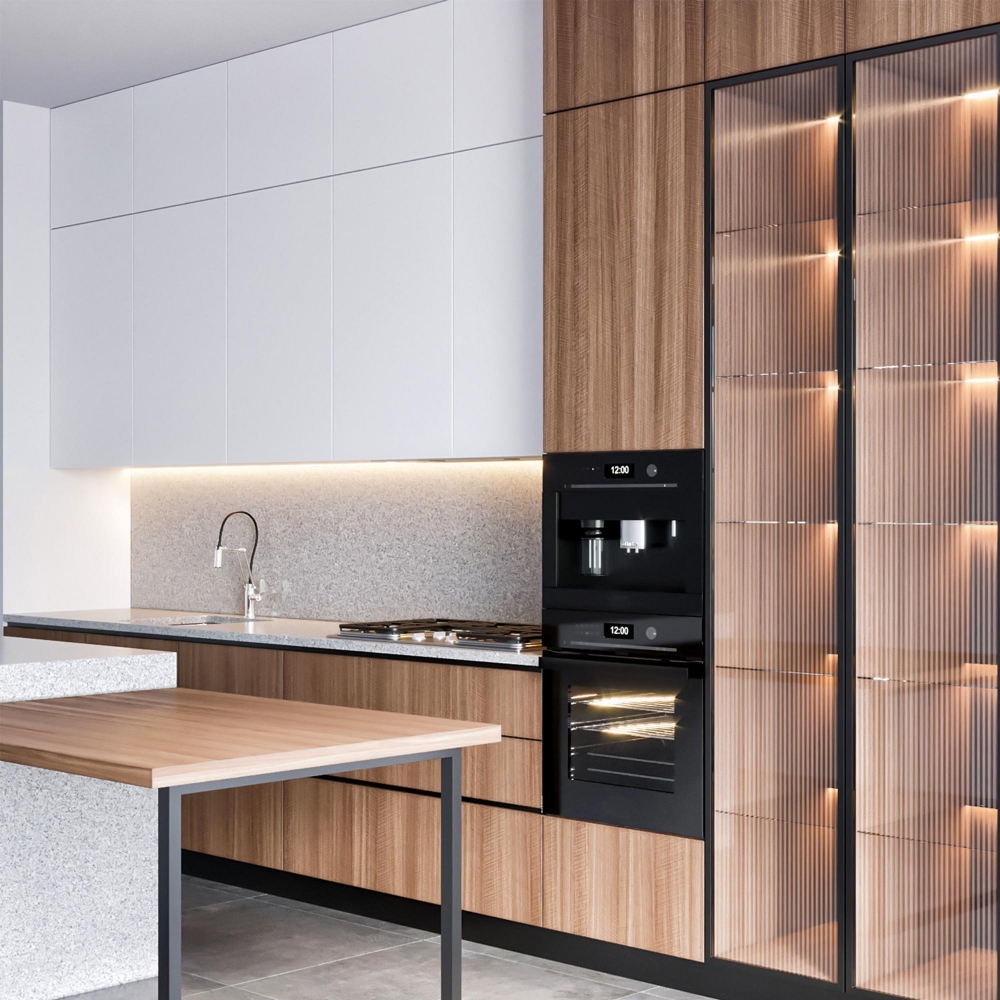
It adds a unique touch to your kitchen while also providing privacy by obscuring the contents of your cabinets. Textured glass comes in various patterns and designs, including ribbed, frosted, and seeded varieties.
Ribbed textured glass features vertical or horizontal lines that add depth to the cabinet doors. Frosted textured glass has a smooth surface with an opaque finish that diffuses light but still allows some visibility into the cabinet’s contents.
Seeded textured glass contains tiny air bubbles trapped within its surface during manufacturing, giving it a vintage look.
Textured glasses are perfect for those who want something different from clear or frosted options but still desire functionality and style in their kitchens’ design scheme.
Seeded Glass Cabinets
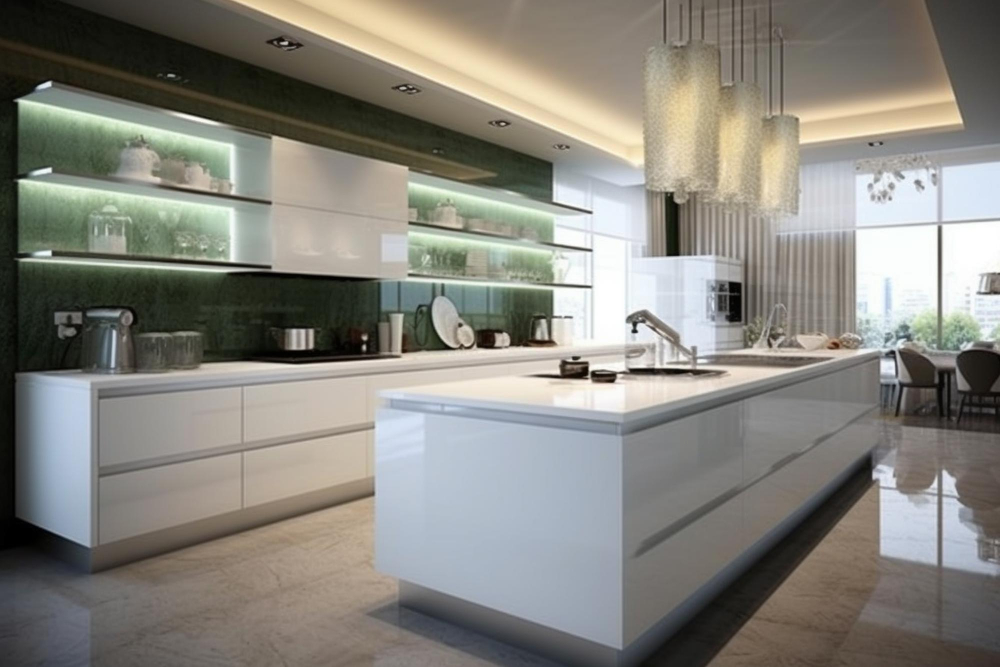
This type of glass is made by adding small air bubbles or seeds into the molten glass during production, creating a unique and eye-catching look.
One of the benefits of seeded glass cabinets is that they provide privacy while still allowing light to pass through. The seeds in the glass obscure what’s inside, making it an ideal option for storing items you don’t necessarily want on display.
Another advantage of seeded glass cabinets is that they can complement various design styles. Whether your kitchen has a traditional or modern aesthetic, there’s sure to be a style of seeded-glass cabinet that will fit right in.
When choosing seeded-glass cabinets, keep in mind that some varieties may have larger or smaller seed bubbles than others. It’s also important to consider how much natural light enters your kitchen as this can affect how visible items inside the cabinet will be.
Leaded Glass Cabinet Styles
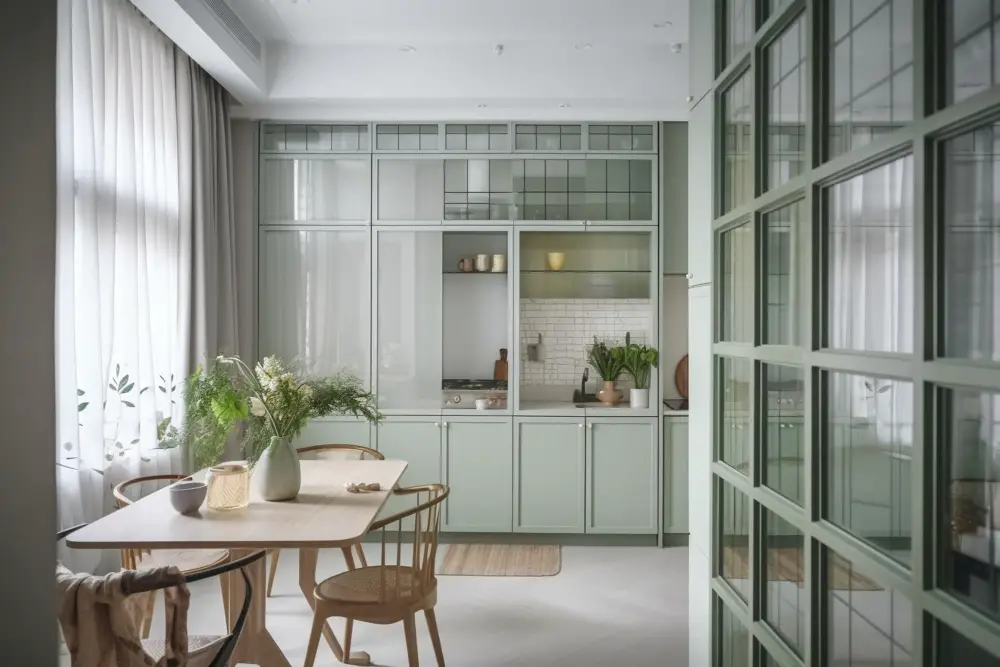
They feature small pieces of glass held together by lead strips, creating intricate patterns that add visual interest to any space. Leaded glass can be clear or colored, allowing you to customize the look of your cabinets to match your personal style.
One popular type of leaded glass is called “beveled” or “diamond cut.” This style features angled edges on each piece of glass, creating a prism effect that reflects light in different directions and adds depth to the cabinet doors.
Another option is known as “stained-glass,” which uses colored pieces of glass arranged in various patterns. Stained-glass leaded cabinets can create a beautiful focal point in any kitchen design.
Stained Glass Cabinets
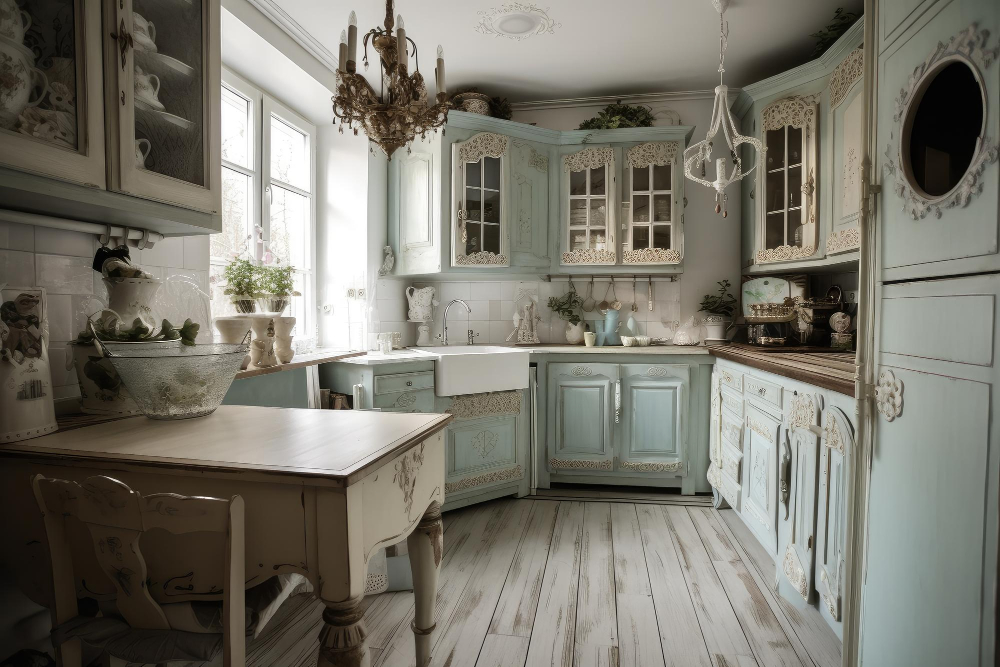
Stained glass is created by adding color to the glass during its manufacturing process, resulting in beautiful patterns and designs that can add character to any kitchen. These types of cabinets work well in traditional or vintage-style kitchens but can also be incorporated into modern designs for a pop of color.
When choosing stained glass cabinets, consider the colors used in your kitchen’s overall design scheme. You want to ensure that the colors complement each other rather than clash.
Keep in mind that while stained glass adds visual interest to your cabinetry, it may not be as transparent as clear or frosted options.
Sumiglass Cabinets
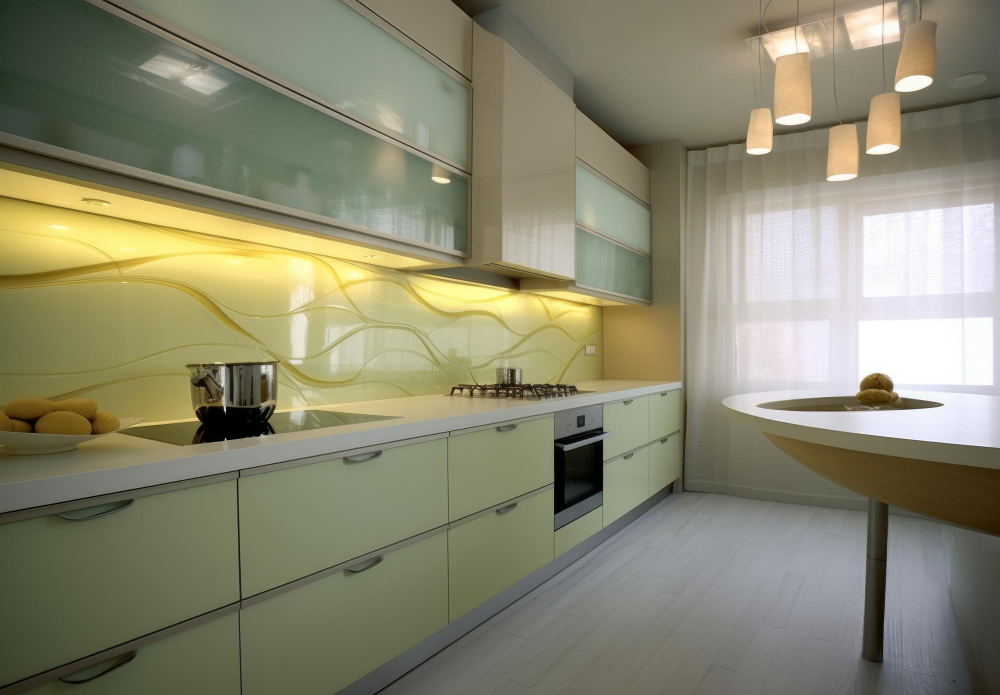
It is a tempered glass that has been treated with an acid etching process, resulting in a frosted appearance. Sumiglass cabinets are perfect for those who want the elegance and sophistication of frosted glass but also desire some privacy.
The acid-etched surface of Sumiglass makes it resistant to fingerprints and smudges, making it easy to clean and maintain. This type of glass can be customized with various patterns or designs to add more personality to your kitchen decor.
One thing you should keep in mind when considering Sumiglass cabinets is their thickness. Since they are made from tempered glass, they tend to be thicker than other types of cabinet glasses which may affect the overall weight capacity limit on your cabinetry hardware.
Choosing Cabinet Glass Thickness
Thicker glass is generally more durable and less likely to break or crack, making it a good choice for families with young children or pets. However, thicker glass can also be heavier and may require stronger cabinet hinges and hardware.
On the other hand, thinner glass is lighter in weight but may not be as strong as thicker options. It’s important to choose a thickness that will provide adequate support for any items you plan on storing inside your cabinets.
The most common thicknesses of cabinet glass range from 1/8 inch (3mm) up to 1/4 inch (6mm). Ultimately, the decision on which thickness of cabinet glass you choose will depend on personal preference and practical considerations such as safety concerns.
Glass Cabinet Door Frames
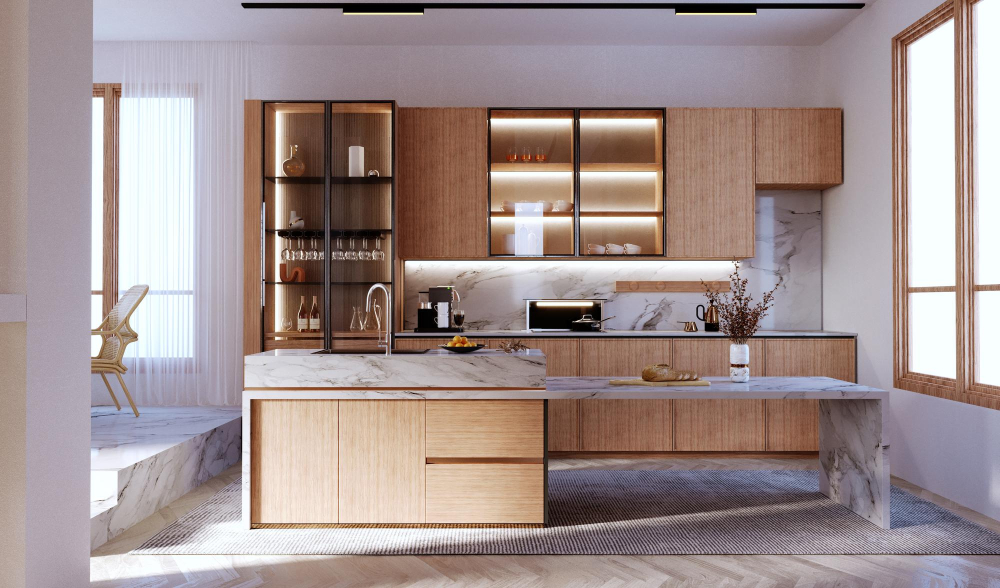
The frame provides structure and support for the glass, ensuring it stays in place and doesn’t break or shatter easily. There are several types of frames to choose from, including wood, metal, and plastic.
Wood frames are popular because they can be stained or painted to match your kitchen decor seamlessly. Metal frames offer a sleek modern look that complements contemporary kitchens while plastic frames provide an affordable option for those on a budget.
When choosing your cabinet door frame material consider durability alongside style preferences; some materials may require more maintenance than others over time.
Customizing Glass Cabinet Doors
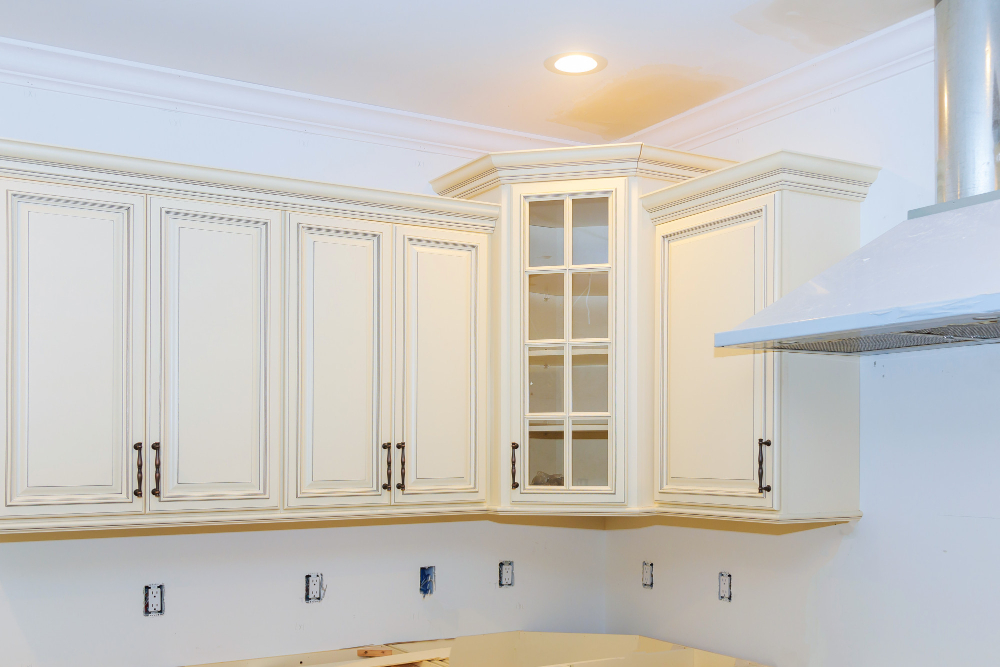
Customization allows you to create unique designs that reflect your style and personality. You can choose from various options such as etching, sandblasting or even adding color accents.
Etched glass cabinet doors are created by using acid or sandblasting techniques on the surface of the glass. This process creates a frosted effect that adds texture and depth while still allowing light into your cabinets.
Sandblasted glass cabinet doors have a similar effect but with more intricate patterns and designs than etched ones. Sandblast patterns can be customized according to individual preferences, making them perfect for those who want something truly unique in their kitchen design.
Adding color accents is another way of customizing your glass cabinet doors; this involves applying colored films onto clear or frosted glasses creating beautiful effects when combined with lighting fixtures inside the cabinets.
Glass Cabinet Door Styles
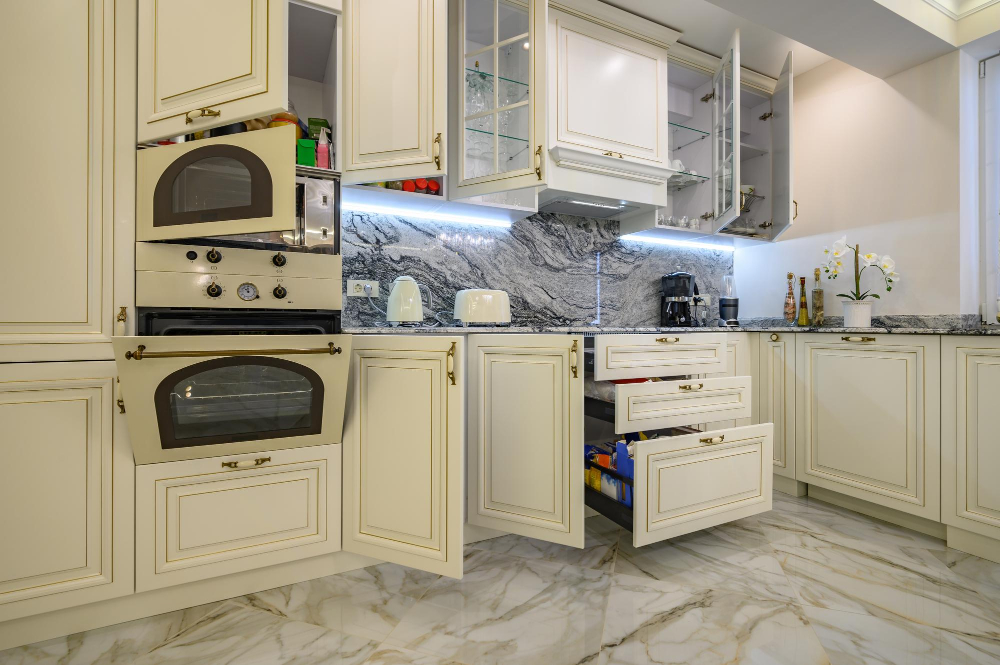
Some popular glass cabinet door styles include traditional, modern, and transitional designs. Traditional glass cabinets often feature intricate patterns or beveled edges that add a touch of elegance to any kitchen.
Modern glass cabinets typically have clean lines and simple designs that complement contemporary decor. Transitional style combines elements from both traditional and modern design for a timeless yet updated look.
Another option is to choose custom-designed glass cabinet doors that reflect your personal style preferences while also fitting seamlessly into the overall aesthetic of your kitchen space.
When selecting the right type of glass for your kitchen cabinets, it’s important to consider not only the style but also factors such as durability, safety considerations (especially if you have young children), ease-of-cleaning/maintenance requirements as well as budget constraints.
Handleless Glass Kitchen Cabinets
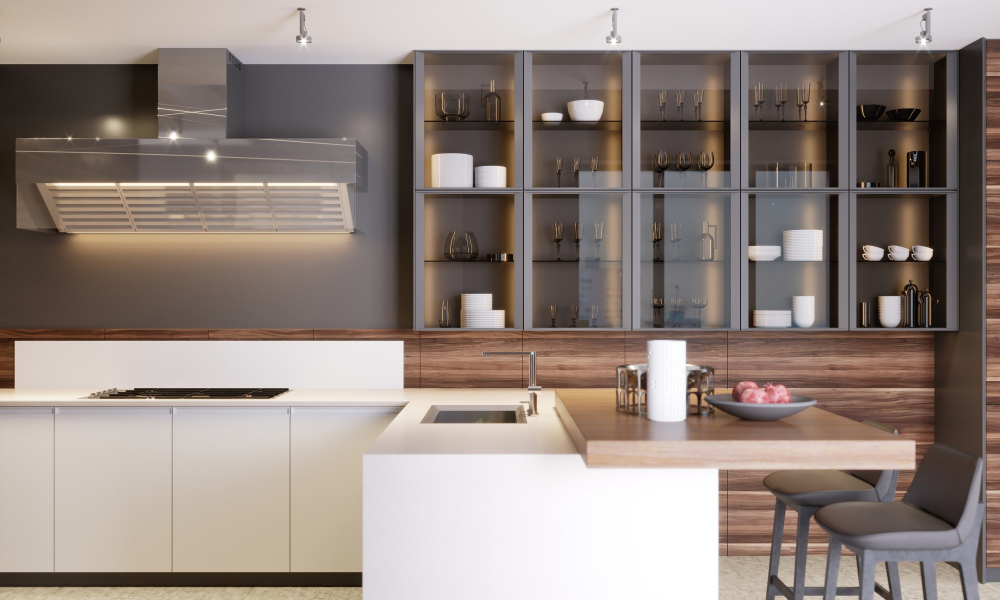
These cabinets have no visible handles or knobs, giving them a clean and minimalist appearance. Instead of traditional hardware, they often feature push-to-open mechanisms that allow you to easily open and close the cabinet doors with just a gentle push.
One of the biggest advantages of handleless glass kitchen cabinets is their ease of use. Without any protruding handles or knobs to get in your way, these cabinets are incredibly user-friendly.
They also make it easier to keep your kitchen looking neat and tidy since there are no handles or knobs to collect dust.
Another benefit is that they can help create an illusion of more space in smaller kitchens by eliminating visual clutter caused by bulky hardware on cabinet doors.
However, it’s important to note that installing handleless glass kitchen cabinets requires precision as there should be enough space between each door panel so one can comfortably grip them without touching other panels while opening/closing them.
Pros and Cons of Glass Kitchen Cabinets
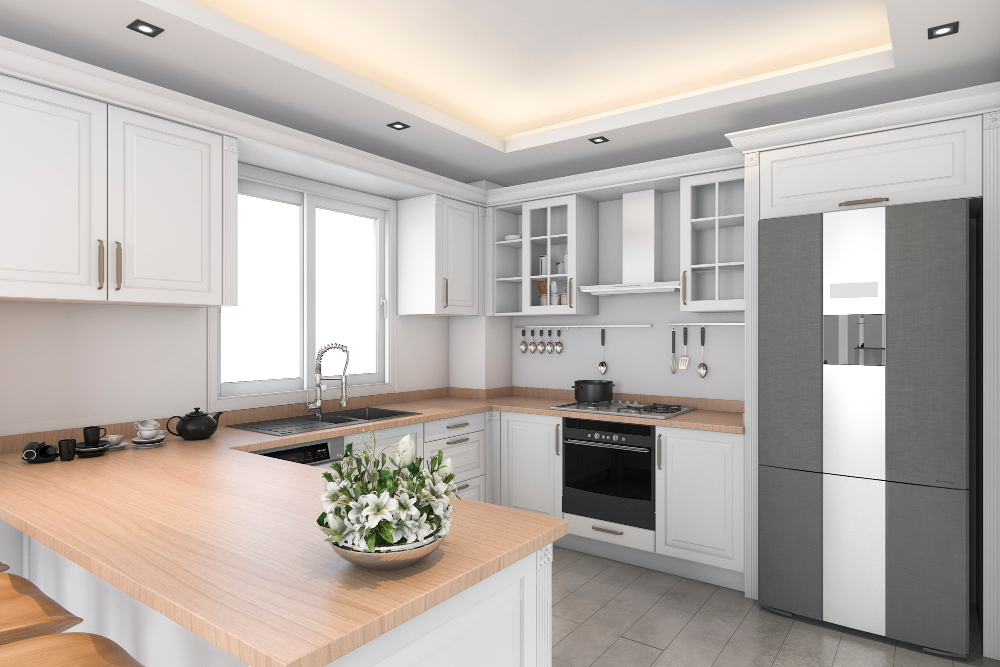
Let’s take a closer look at the pros and cons of glass kitchen cabinets to help you decide if they are right for your home.
Pros:
- Glass cabinet doors can make your space feel larger by reflecting light.
- They allow you to showcase decorative dishes, glasses, or other items.
- Glass is easy to clean with just a damp cloth or window cleaner.
- You can choose from various types of glass that offer different levels of privacy.
Cons:
- Glass cabinets require more maintenance than traditional wood ones as fingerprints and smudges are more visible on them.
- If not installed correctly, the glass may break easily which could be dangerous in a busy kitchen environment
- The contents inside will always be visible so it might not suit everyone’s taste
While there are some downsides to having glass kitchen cabinets such as increased maintenance requirements and potential safety hazards if improperly installed; many homeowners find that the benefits outweigh these drawbacks.
Choosing the Right Cabinet Glass Style
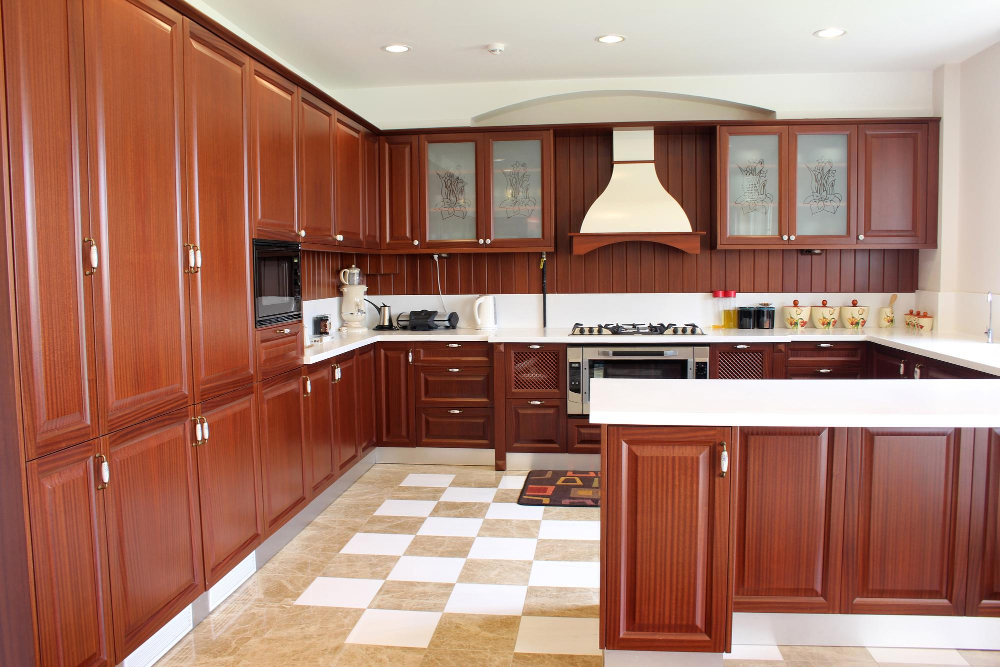
First and foremost, you want a style that complements the overall design of your kitchen. If you have a modern or contemporary kitchen, clear glass or frosted glass may be the perfect choice.
On the other hand, if you have a more traditional or rustic-style kitchen, seeded or stained glass may be more appropriate.
Another important factor is functionality. Do you want your cabinet contents on display at all times? Or do you prefer some privacy? Textured and frosted glasses can provide some level of privacy while still allowing light in.
It’s also essential to think about maintenance when selecting cabinet glass styles. Clear and smooth glasses are easier to clean than textured ones which tend to accumulate dust easily.
Glass Cabinet Safety Considerations
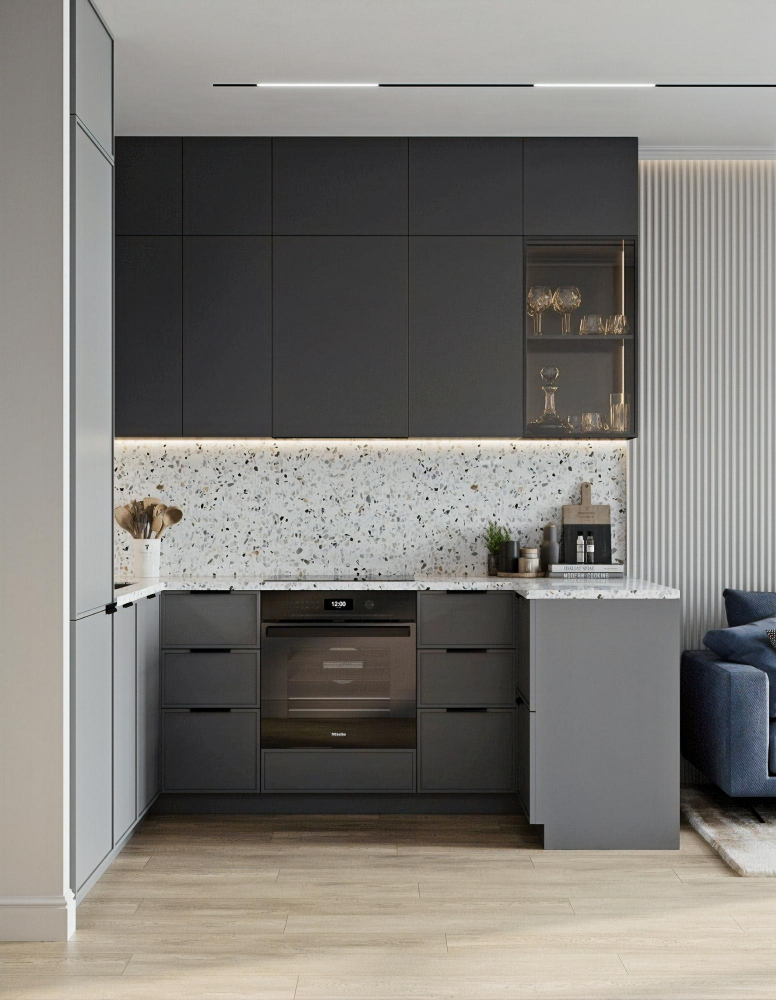
One of the main concerns with glass cabinets is the risk of breakage and injury from shattered glass. To minimize this risk, it’s essential to choose tempered or laminated safety glass for your kitchen cabinets.
Tempered glass is heat-treated and cooled rapidly, making it four times stronger than regular annealed (non-tempered) glass. If broken, tempered glass shatters into small pieces that are less likely to cause serious injury compared to large shards from non-tempered varieties.
Laminated safety glasses consist of two or more layers bonded together with an interlayer film that holds them in place if they break. This type of cabinet door will not shatter into pieces like tempered ones but instead remain intact within its frame.
When installing your new kitchen cabinetry doors made out of either laminated or tempered glasses ensure you hire a professional installer who has experience working with these materials as improper installation can lead to accidents later on down the line.
Cleaning and Maintenance Tips
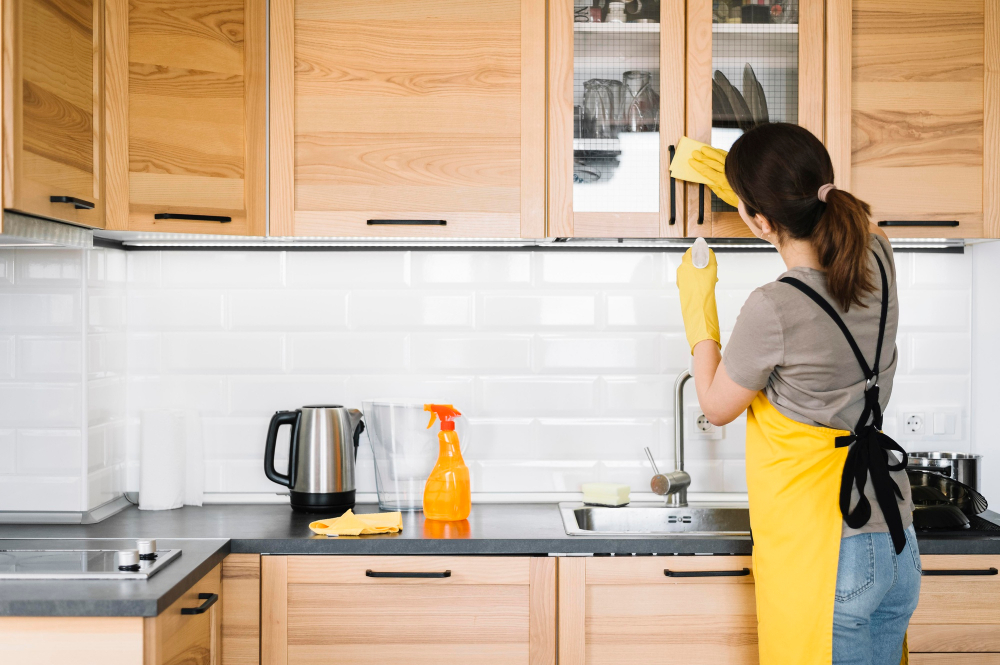
To keep your glass cabinets looking their best, here are some tips:
1. Use a soft cloth or sponge: Avoid using abrasive materials like steel wool or scrub brushes that can scratch the glass surface.
2. Choose the right cleaner: Use a gentle cleaner specifically designed for glass surfaces, such as vinegar diluted with water or commercial window cleaners.
3. Wipe down regularly: Regularly wipe down your cabinet doors with a damp cloth to remove dust and fingerprints before they build up.
4. Dry thoroughly: After cleaning, make sure you dry the surface completely with another clean cloth to prevent streaks from forming on the glass.
5. Check hardware regularly: Keep an eye on hinges and handles for signs of wear-and-tear that could cause damage over time; tighten screws if necessary.
Budgeting for Glass Cabinets
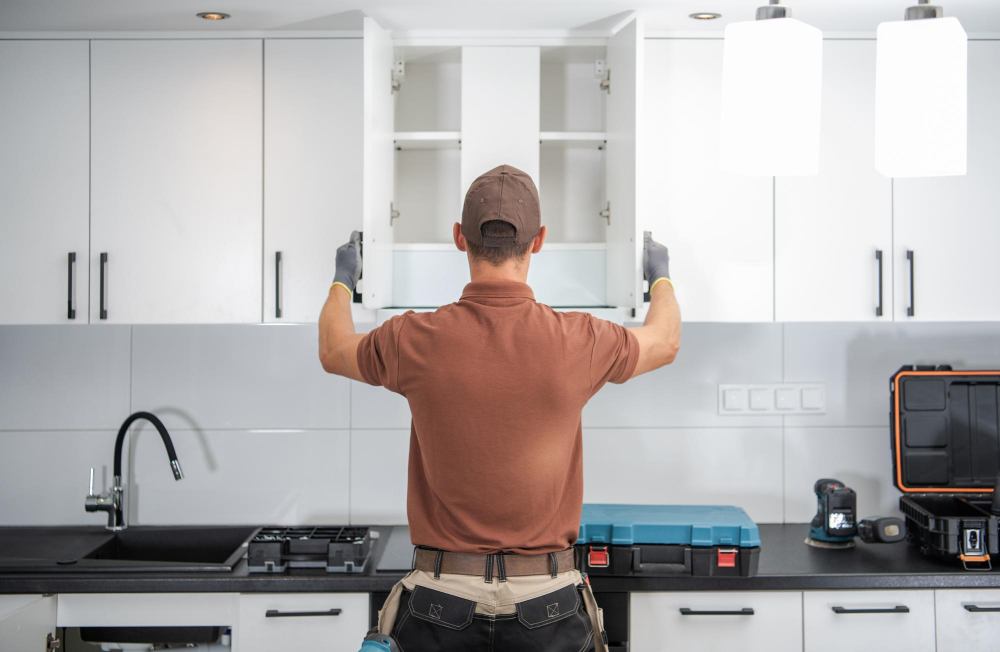
When considering glass cabinets for your kitchen, it’s important to set a budget and stick to it. The cost of glass cabinets will depend on several factors such as the type of glass used, the size and number of cabinet doors needed, and whether or not you opt for custom designs.
One way to save money when purchasing glass cabinets is by choosing standard sizes rather than custom-made ones. This will help reduce costs associated with labor and materials required for customization.
Another option is selecting less expensive types of glasses like clear or frosted instead of stained or textured varieties that tend to be more costly due to their intricate designs.
It’s also essential that you consider installation costs when budgeting for your new cabinetry since installing them requires specialized skills which may require hiring professionals who charge hourly rates depending on their experience level.
Installing Glass Cabinet Doors
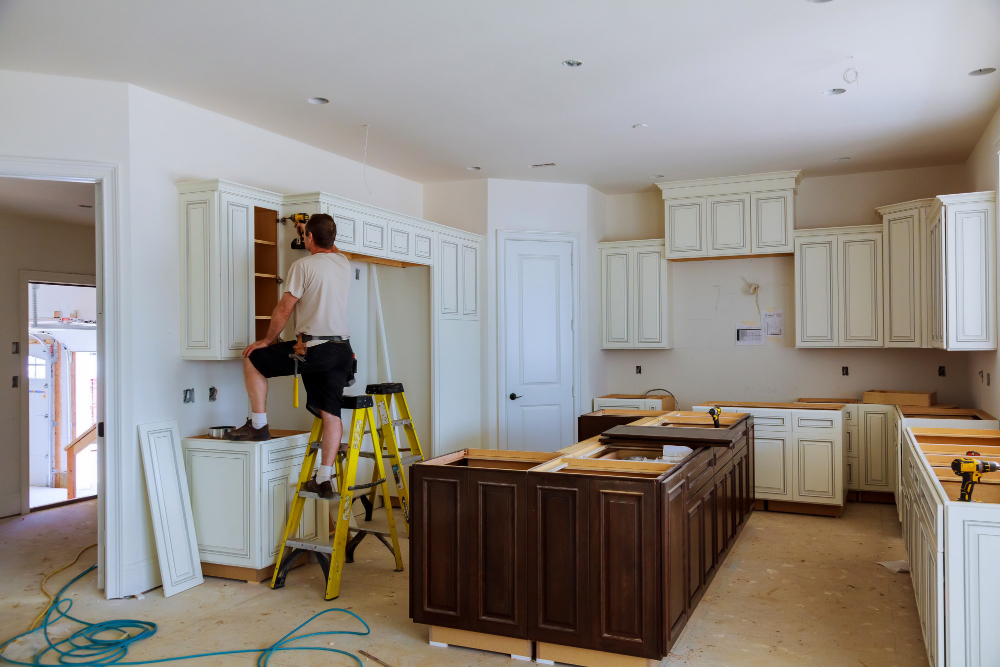
It’s important to ensure that you have the right tools and knowledge before attempting this project. First, measure your cabinets accurately so that you can order the correct size of glass panels.
Once you have received your panels, carefully remove any existing cabinet doors and hardware.
Next, install hinges onto both sides of each door frame where they will attach to the cabinet box. Then place each panel into its respective frame and secure them with clips or adhesive tape until they are fully installed.
Attach handles or knobs as desired for easy opening and closing of your new glass cabinets! With these simple steps in mind, installing glass cabinet doors can be an exciting DIY project that adds value to any home renovation plan while also providing functionality by allowing homeowners to showcase their favorite dishes and accessories in style!
FAQ
What is the best thickness of glass for cabinet doors?
The best thickness of glass for cabinet doors is 1/8″, as it is light enough to not make the door feel heavy, but thicker than single strength glass, reducing the chances of it being easily broken.
What is the best glass for kitchen doors?
The best glass for kitchen doors is transparent glass, as it is a classic, fail-safe choice that suits various styles and is easily available in most shops.
What are the most popular types of glass finishes for kitchen cabinet doors?
The most popular types of glass finishes for kitchen cabinet doors are clear, frosted, seeded, and textured glass.
How do different glass styles impact the overall aesthetic of a kitchen?
Different glass styles impact the overall aesthetic of a kitchen by providing variations in transparency, texture, and design, contributing to a more personalized and visually appealing space.
Are there safety recommendations or specific types of glass ideal for households with children?
Tempered glass is a safer option for households with children due to its increased strength and shatter-resistant properties.




